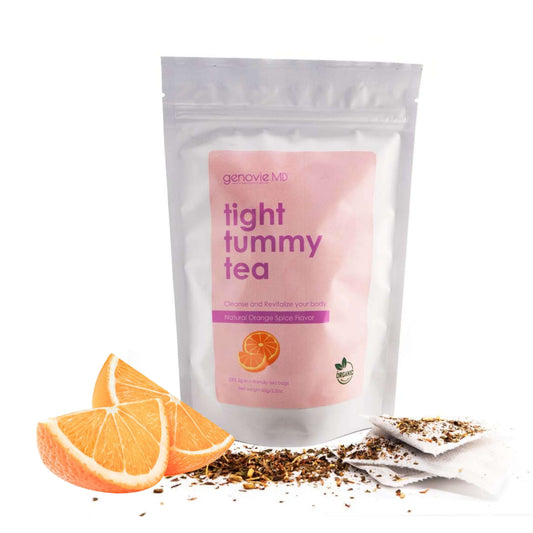Can You Use Silicone Scar Sheets for Wrinkles?
![]()
Wrinkles are an inevitable part of aging, but that doesn’t stop us from searching for ways to keep skin smooth and youthful. Over the years, everything from retinol creams to Botox has been used to fight fine lines. But recently, a surprising question has surfaced: Can you use silicone scar sheets for wrinkles?
Yes, silicone scar sheets can temporarily smooth wrinkles by hydrating the skin and preventing creasing. However, they don’t permanently erase wrinkles. Instead, they work best as a non-invasive, supportive skincare tool.
The idea may sound unusual, considering these sheets were originally created for scar management. Yet many women have started using them as silicone wrinkle patches, hoping for softer skin and fewer lines.
What Are Silicone Scar Sheets?
Silicone scar sheets are thin, flexible patches made from medical-grade silicone. They were developed to flatten and lighten scars by creating a protective barrier over the skin. Dermatologists often recommend them for post-surgical scars, burns, or acne marks.
Here’s why they work so well for scars:
-
Occlusive therapy: They form a seal that reduces transepidermal water loss, keeping the skin underneath moist and healthy.
-
Collagen regulation: By hydrating and protecting the area, they help collagen fibers reorganize, leading to smoother, flatter scars.
- Barrier protection: They shield skin from external irritants and reduce redness.
Now, when applied to areas like the forehead or around the mouth, these same properties may benefit wrinkles too.
How Do Silicone Scar Sheets Affect Wrinkles?
When it comes to wrinkles, the benefits of silicone sheets are mainly tied to hydration and immobilization.
-
Hydration Boost
Silicone prevents moisture loss, creating a plump and smooth appearance. Fine lines often look worse when skin is dehydrated, so this temporary moisture surge makes them less noticeable.
-
Reduced Creasing
Wrinkles often deepen at night when we sleep with our face pressed into a pillow. Silicone patches act like a barrier, keeping skin stretched and preventing repeated folding.
-
Support for Skin Texture
Consistent use may improve elasticity and smoothness, giving skin a more youthful look, though these effects usually fade after removal.
So, while silicone scar sheets don’t permanently erase wrinkles, they’re a simple, non-invasive way to make them less visible in the short term.
Silicone Sheets vs. Wrinkle-Specific Treatments
Let’s see how silicone sheets stack up against common anti-aging solutions:
|
Treatment |
How It Works |
Duration of Results |
Invasiveness |
|
Silicone Scar Sheets |
Hydrate skin, prevent creasing |
Temporary (hours–days) |
Non-invasive |
|
Retinol/Serums |
Boost collagen, improve cell turnover |
Long-term with use |
Topical |
|
Botox |
Relaxes muscles that cause wrinkles |
3–6 months |
Minimally invasive |
|
Dermal Fillers |
Fill deep wrinkles and add volume |
6–12 months |
Minimally invasive |
|
Laser Treatments |
Stimulate collagen, resurface skin |
Months–years |
Minimally invasive |
Silicone sheets work more like a cosmetic quick-fix rather than a structural solution. They’re best for women looking for a gentle, affordable, and non-invasive option.
How to Use Silicone Scar Sheets for Wrinkles
To get the best results, it’s important to use them correctly.
Here’s a step-by-step guide:
-
Cleanse Your Skin – Wash your face thoroughly and pat it dry.
-
Cut to Size – Trim the sheet to fit wrinkle-prone areas like the forehead, crow’s feet, or smile lines.
-
Apply Smoothly – Place the sticky side onto your skin and press gently.
-
Wear Overnight – Keep the sheet on for at least 6–12 hours.
-
Repeat Consistently – Use 3–4 times a week to see visible improvements.
- Reuse When Possible – Many silicone sheets are reusable if washed and stored properly.
Pro Tip: Don’t apply heavy creams under the sheets. Oils and moisturizers can reduce adhesion and effectiveness.
Which Wrinkles Do Silicone Sheets Work Best On?
Not all wrinkles respond the same way. Silicone sheets are most effective on:
-
Forehead Wrinkles: Especially horizontal lines caused by expressions.
-
Crow’s Feet: Fine lines around the outer corners of the eyes.
-
Smile Lines (Nasolabial Folds): Wrinkles that deepen when we laugh or smile.
- Sleep Wrinkles: Lines formed overnight due to pillow pressure.
They’re less effective for deep-set wrinkles, which are better treated with retinoids, professional treatments, or injectables.
Are Silicone Sheets Recommended By Dermatologists?
Most dermatologists agree that silicone scar sheets are safe for wrinkle use, though they caution against expecting dramatic results.
-
Pros: Safe, reusable, non-invasive, affordable.
- Cons: Temporary results, not a substitute for clinical treatments.
A dermatologist might suggest combining silicone sheets with hydrating serums like hyaluronic acid, or collagen-stimulating products like retinol for better long-term benefits.
Pros and Cons of Silicone Scar Sheets for Wrinkles
Pros
-
Hydrate and plump the skin
-
Temporarily reduce fine lines
-
Prevent skin creasing overnight
-
Non-invasive and easy to use
- Safe for most skin types
Cons
-
Results fade after removal
-
Limited effect on deep wrinkles
-
Requires consistent use
- Not backed by long-term clinical evidence for wrinkle reduction
How Long Do You Need to Use Silicone Sheets?
You may notice smoother skin after just one night. However, for more noticeable improvements:
-
Short-term effects: Visible after a single use.
-
Consistent benefits: Requires use 3–4 nights a week for at least 4–6 weeks.
- Long-term care: Ongoing use is needed to maintain results since they fade once the sheets are removed.
Think of silicone sheets as part of your nightly skincare routine, not a one-time cure.
Silicone Sheets vs. Silicone Wrinkle Pads
Some products are specifically designed as silicone wrinkle patches rather than scar sheets. While the materials are similar, wrinkle pads are shaped for facial areas like the forehead, eyes, or mouth.
So, while you can use silicone scar sheets for wrinkles, wrinkle-specific pads may be more convenient since they’re cut and sized for the job.
Best Practices for Your Skincare Routine
Here’s how to maximize results:
-
Use silicone sheets overnight for 6–12 hours.
-
Combine with a daytime routine that includes sunscreen and hydrating serums.
-
Don’t skip core anti-aging products like retinol or vitamin C serums.
- Stay hydrated and maintain a balanced diet—healthy skin comes from within too.
For added results, consider pairing silicone sheets with hyaluronic acid plumping serum for deep hydration or retinol smoothing serum to support collagen production.
Are Silicone Scar Sheets Safe?
Yes, they’re generally considered safe for all skin types, but a few precautions help:
-
Don’t apply to broken or irritated skin.
-
Rotate application sites to avoid sensitivity.
-
If redness or itching occurs, discontinue use.
- Always clean sheets between uses.
Because they’re medical-grade and dermatologist-recommended for scars, they’re one of the safer at-home wrinkle tools available.
Should You Use Silicone Scar Sheets for Wrinkles?
Yes, silicone sheets can temporarily smooth fine lines, hydrate the skin, and prevent creasing overnight. They’re safe, affordable, and non-invasive, making them a great addition to your skincare toolbox.
However, they aren’t a replacement for proven anti-aging treatments. For lasting results, pair silicone sheets with serums, sun protection, and a consistent routine.
If you’re looking for a gentle, at-home solution, silicone scar sheets can be a worthwhile step toward fresher, more youthful-looking skin.
Conclusion
Silicone scar sheets are no longer just for scars. By creating a hydrating and protective environment, they offer temporary wrinkle-smoothing benefits. While they don’t erase wrinkles permanently, they’re a valuable tool for women who want safe, non-invasive options to enhance their skincare routine.
Want to try it yourself?
Explore our silicone scar sheets and anti wrinkle silicone pads to refresh and smooth your skin naturally.
![Microneedle Pimple Patch[9 Pcs]](http://genovie.com/cdn/shop/files/pimple3_533x.jpg?v=1727980807)
![Microneedle Pimple Patch[9 Pcs]](http://genovie.com/cdn/shop/files/first_pimple_533x.jpg?v=1728066210)



Leave a comment
All blog comments are checked prior to publishing